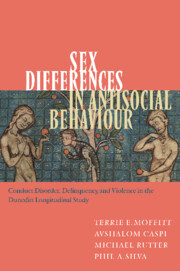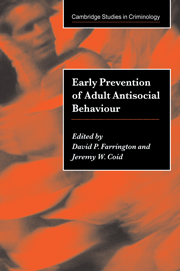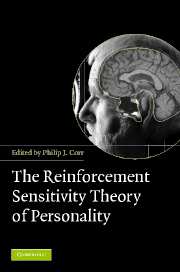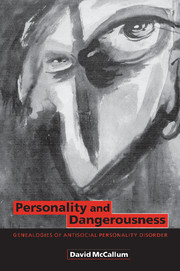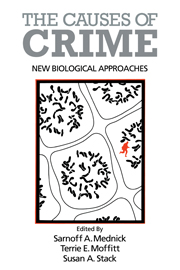Sex Differences in Antisocial Behaviour
Why are females rarely antisocial and males antisocial so often? This is one of the key questions addressed in a fresh approach to sex differences in the causes, course and consequences of antisocial behavior. A multidisciplinary team of authors present all-new findings from the landmark Dunedin Longitudinal Study and also provide new insights into such topics as the importance of puberty, diagnostic issues in psychiatry, the problem of domestic violence and the intergenerational transmission of antisocial behavior.
- Provides insights into the impact of sex differences on the causes and consequences of antisocial behaviour
- Presents findings from the Dunedin Longitudinal Study
- Written by a multidisciplinary team from criminology, psychiatry and developmental psychology
Reviews & endorsements
"...the book is a pleasure to read." Psychological Medicine
"A particularly attractive feature is a succinct summary of the findings at the end of each chapter and a list of related questions that remain for investigators to address. Anyone researching into or developing policies for antisocial children should have access to this book. Clinicians will also find it of great value. The findings will be quoted for many years to come." European Child and Adolescent Psychiatry
Product details
October 2001Hardback
9780521804455
300 pages
236 × 157 × 24 mm
0.586kg
2 b/w illus. 28 tables
Available
Table of Contents
- List of figures
- List of tables
- Preface
- Acknowledgements
- 1. Introduction
- 2. The Dunedin Multidisciplinary Health and Development Study
- 3. Sex differences in the amount of antisocial behaviour: dimensional measures
- 4. Sex differences in the prevalence of antisocial behaviour: categorical diagnostic measures
- 5. Sex differences in physical violence and sex similarities in partner abuse
- 6. Sex and the developmental stability of antisocial behaviour
- 7. Sex and the age of onset of delinquency and conduct disorder
- 8. Sex effects in risk predictors for antisocial behaviour: are males more vulnerable than females to risk factors for antisocial behaviour?
- 9. Sex effects in risk predictors for antisocial behaviour: are males exposed to more risk factors for antisocial behaviour?
- 10. Can sex differences in personality traits help to explain sex differences in antisocial behaviour?
- 11. Sex and comorbidity: are there sex differences in the co-occurrence of conduct disorder and other disorders?
- 12. Do girls who develop antisocial behaviour surmount a higher threshold of risk than their male counterparts?
- 13. Sex differences in the effects of antisocial behaviour on young adult outcomes
- 14. Sex, antisocial behaviour and mating: mate selection and early childbearing
- 15. Evaluating the recommendation to relax the criteria for diagnosing conduct disorder in girls
- 16. Life-course persistent and adolescence-limited antisocial behaviour among males and females
- 17. Priorities for a research agenda
- References
- Index.

